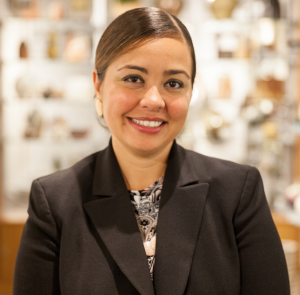The Children’s Hospital of Philadelphia (CHOP) has raised nearly $400 million in philanthropic gifts during the past three years through its donor base of about 80,000. Approximately 3,000 high-level donors have accounted for 97 percent of revenue.
In a post-Affordable Care Act (ACA) healthcare system, CHOP is likely to continue to lean heavily on major gifts, according to Stuart Sullivan, executive vice president and chief development officer.
Sullivan has yet to see significant changes in giving as a result of the ACA, noting that the law’s full effects are still off in the future. Though it is unlikely to impact major philanthropists with private insurance and disposable wealth, the ACA might influence the general public, according to Sullivan. As deductibles increase, patients may base their healthcare choices more on price than the traditional metrics of quality and conveniences.
Patients taking a consumer’s mentality to healthcare in the same way they would when purchasing a car or dishwasher has a ripple effect in philanthropy. “People viewing healthcare institutions in a different way will make us major-gifts focused,” Sullivan said. “More reliant on the top end of the pyramid than the bottom or the middle.”
Staff has doubled-down to fill the gaps, marketing CHOP as a hospital, research and philanthropic institution in ways it hasn’t in the past, Sullivan said. That includes taking out philanthropy-focused ads in print and online media — something that CHOP never did as recently as three or four years ago.
Fundraisers at CHOP endeavored to create a stronger culture of philanthropy and to cultivate donors from a wide base of financial levels. How successful they are, Sullivan said, has a simple measurable. “Easy,” Sullivan said, “gifts, the number of donors at each level, how much money is coming in. If it’s not going up, I’m not doing my job right.”
The ACA, often referenced in the effort to expand Americans’ access to health insurance, is making monetary and strategic impacts to hospitals’ and healthcare systems’ fundraising efforts. The challenges brought on by a major shift in the quantity of insured Americans and the means in which they are being insured has some providers analyzing opportunities to capitalize and others searching for means to fill gaps.
Even the perception of more insured patients can create challenges in fundraising. Tampa General Hospital (TGH), for instance, is a safety-net hospital where any patient who goes through its doors, insured or not, gets treatment, according to Robin DeLaVergne, executive director of the Tampa General Hospital Foundation. Though many patients remain uninsured, the perception that the ACA has provided insurance for all has become a hurdle in securing gifts, DeLaVergne said. The situation is further complicated in Florida as the state government has not signed up for Medicaid expansion allowed under ACA.
The foundation has been successful in maintaining its donation base through education, DeLaVergne said, but the process leading to gifts has been extended. Securing a large gift might now require two additional face-to-face meetings to inform donors of the realities the hospital is facing, said DeLaVergne.
Federal money that hospitals such as TGH receive for providing a disproportionate amount of uncompensated care is expected to dip in 2016. TGH received $26.27 million during fiscal 2015 in Disproportionate Share Hospital and Low Income Pool payments, according to DeLaVergne, reimbursing a fraction of the $85 million in uncompensated care provided at the hospital.
Managers at some of TGH’s peer hospitals have looked into cutting programs that tend to lose money in the face of reduced federal support and difficulty fundraising. TGH managers have not had such conversations, DeLaVergne said. But with the possibility of needing to cover more expenses, TGH staff is in the process of strategizing ways to expand the donor base.
Bill Littlejohn, senior vice president and CEO of Sharp HealthCare in San Diego and former chairman of the Association of Healthcare Philanthropy, reported that he and his peers across the country have seen a greater sense of patient loyalty as a result of the ACA. The law has aligned patients with healthcare providers, Littlejohn said, creating opportunities to develop large membership-like dynamics and, in turn, philanthropic relationships.
One of the biggest indicators of patients’ alignment with healthcare providers is “guardian angel” or grateful patient gifts, Littlejohn said. Shape has received 36,000 such gifts during the past decade, with the rate increasing during the past three or four years to 5,000 per year. While capable of producing major gifts or major-gift prospects, such donations have come from a wide range of individuals and have averaged a modest $90.
Sharp donor bases have roughly doubled in the aftermath of the ACA, from about 9,000 five years ago to 17,000 today. A $100-million campaign goal launched during the recession for a variety of programs including a hospice facility and nursing scholarships has reached the 80 percent mark, he said.
Littlejohn has heard plenty of stories on how the potential commoditization of healthcare is hurting or will harm nonprofit health systems. Sharp and other organizations have been successful in avoiding such scenarios by getting out in front of the news reports concerning the ACA and educating donors on Sharp’s community impact, according to Littlejohn.
“What’s really important, even before the ACA, it’s up to philanthropic programs to take the opportunity to provide education through direct mail, e-philanthropy and major gifts programs,” Littlejohn said. “Share the value proposition of Sharp and the ability to do things in a new environment. We’ve been successful in meeting the needs of the community in a new financial dynamic. We haven’t backed off. We’re going to flip it around and be proactive with education.”












